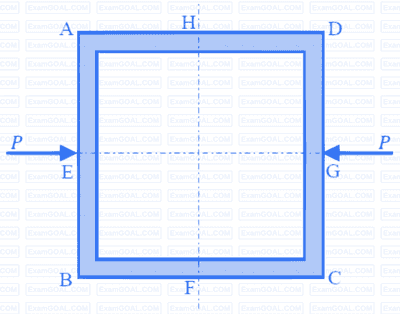A circular solid shaft of span L = 5 m is fixed at one end and free at the other end. A torque T = 100 kN.m is applied at the free end. The shear modulus and polar moment of inertia of the section are denoted as G and J, respectively. The torsional rigidity GJ is 50,000 kN.m2 /rad. The following are reported for this shaft:
Statement i) The rotation at the free end is 0.01 rad
Statement ii) The torsional strain energy is 1.0 kN.m
With reference to the above statements, which of the following is true?
When a simply-supported elastic beam of span L and flexural rigidity EI (E is the modulus of elasticity and I is the moment of inertia of the section) is loaded with a uniformly distributed load w per unit length, the deflection at the mid-span is
$\rm \Delta_0=\frac{5}{384}\frac{wL^4}{El}$
If the load on one half of the span is now removed, the mid-span deflection _______.
In the frame shown in the figure (not to scale), all four members (AB, BC, CD, and AD) have the same length and same constant flexural rigidity. All the joints A, B, C, and D are rigid joints. The midpoints of AB, BC, CD, and AD, are denoted by E, F, G, and H, respectively. The frame is in unstable equilibrium under the shown forces of magnitude 𝑃 acting at E and G. Which of the following statements is/are TRUE?

In a two-dimensional stress analysis, the state of stress at a point is shown in the figure. The values of length of PQ, QR, and RP are 4, 3, and 5 units, respectively. The principal stresses are ________. (round off to one decimal place)
